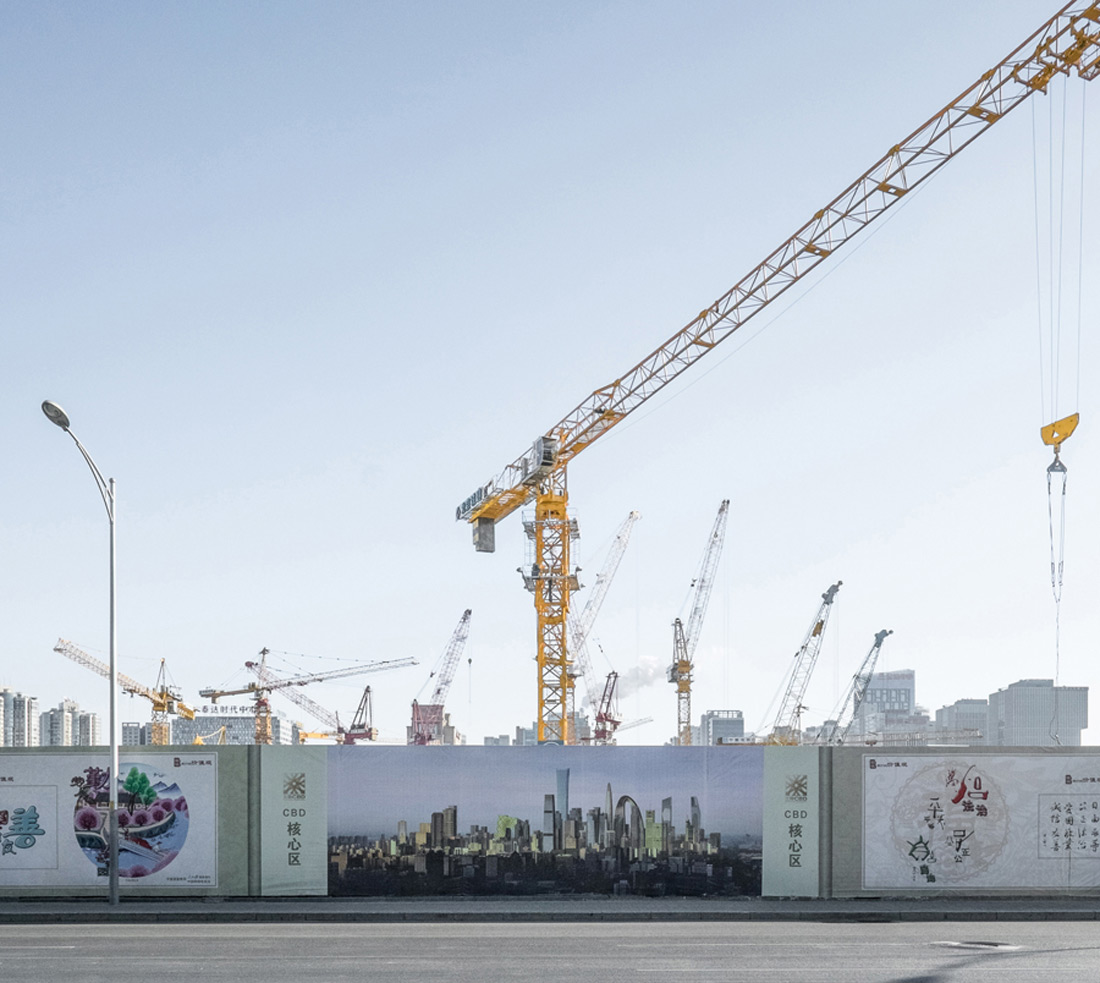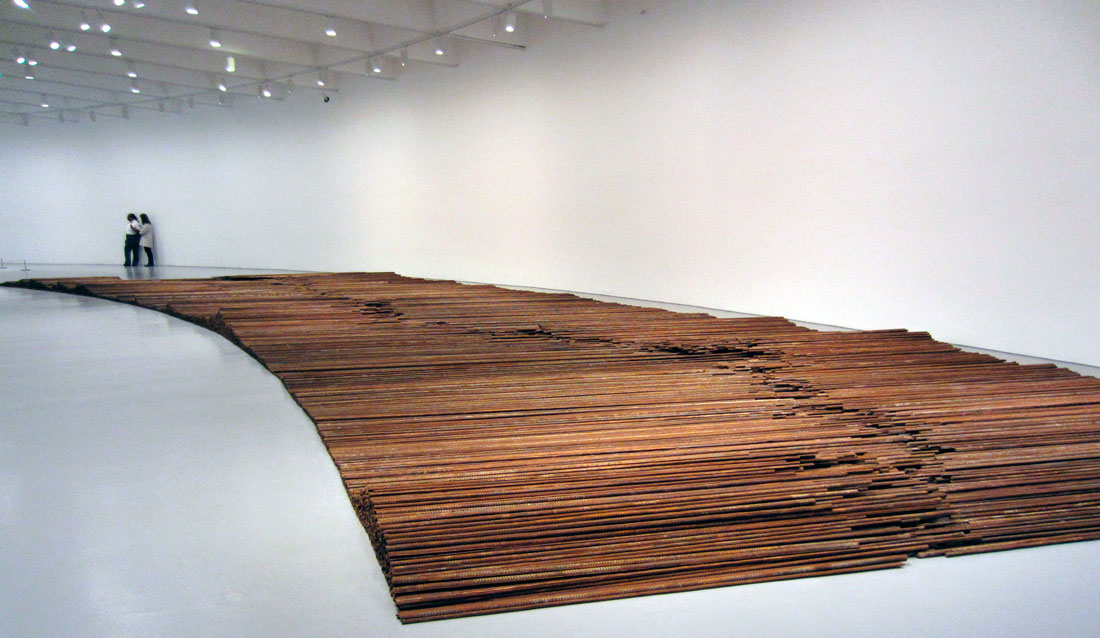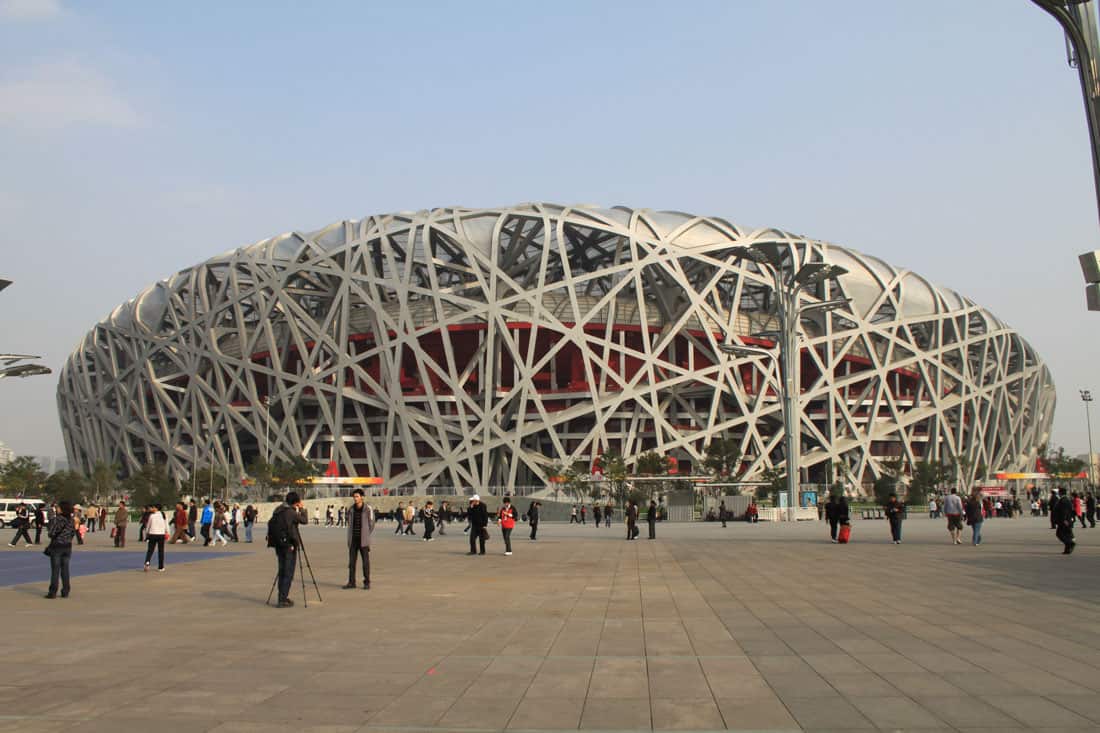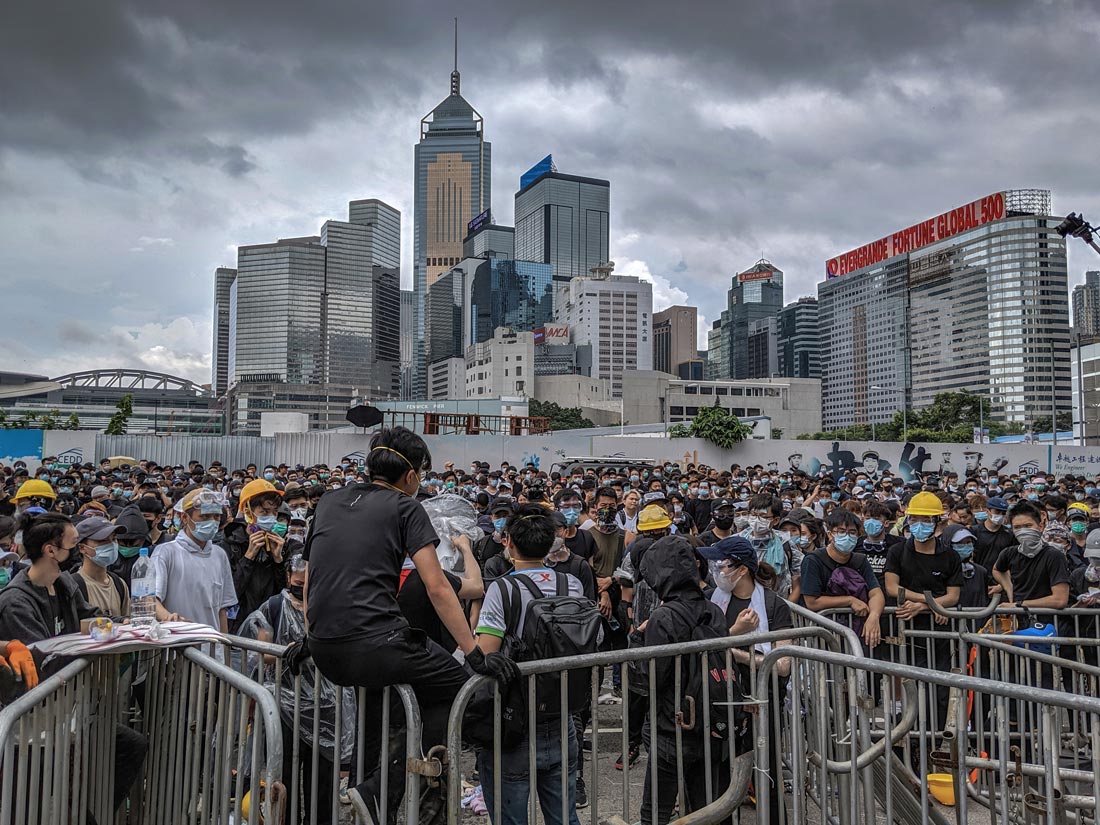Ai Weiwei (1957) is an internationally renowned artist from Beijing, who not only engages with artistic activity but also with political activism. He is currently one of China’s most vocal political commentators, openly criticizing the lack of democracy and human rights justice in his home country.
He spent his childhood in a remote location in the far northwest of China where his father, the poet Ai Qing, was sent to a labor camp after being accused of being an enemy of the revolution for his dissident work against the government. This background planted the seed for Ai Weiwei to use his own work to confront the sociopolitical system in China. In 1978 he attended the Beijing Film Academy and in 1981 he moved to New York where he attended the Parsons School of Design. In 1993 he returned to China and began producing work that defied the severe free speech restrictions imposed in the country by the Chinese Communist Party. In 2011 he was arrested for alleged “economic crimes” and held in custody for 81 days. After being allowed to leave China in 2015, he moved to Europe. He lived in Germany and the UK before settling in Portugal in 2021, where he now lives in the countryside.
Throughout his practice, Ai Weiwei has never ceased to confront his government’s oppression through his work, even though his activism has forced him to live in exile. Including writing, film, photography, conceptual art and architecture, his activity is one of the most prolific and thought-provoking of his time. His views on the built environment reveal its political and cultural implications.
In 2003 you recorded 150 hours of footage of Beijing, covering 2,400 kilometers within the city. What did you learn from Beijing as an urban environment and the people living in it?
Beijing used to be an imperial city. Emperors lived in the palace, whereas all common people lived in grey and flat houses. When the Chinese Communist Party formed the People’s Republic of China in 1949, the feudalist and imperialist tradition continued; a small group of people holds power, but they do not have the lifestyle, taste, and attitude of former aristocrats.
When I recorded the footage in 2003, I realized that China is heading towards an even more authoritarian society. In 2008 before the Olympics, I recorded the streets of this ancient city – more than 600 years old – for the last time. These 150 hours of footage were recorded without editing.
In your recent memoir 1,000 Years of Joys and Sorrows, you insist on the fact that “a sense of belonging is central to one’s identity”. How do you think some of the urban developments in Beijing, which have displaced entire communities from their homes, have threatened the sense of belonging of citizens on a collective scale? For example, families living in hutongs for generations have been forced to live in skyscrapers, erasing not only a part of Chinese heritage but also destroying social dynamics. How have these kinds of decisions affected Chinese society and how might these relationships be restored?
This is a very good question. In the past 30 years, more than 600 million Chinese people in the countryside have moved away from the place and lifestyle that they were familiar with and become city-dwellers. This phenomenon is very common around the world since industrialization, when a nomadic and agricultural lifestyle was transformed into an urban life.
The lack of a sense of belonging is a major attribute of modern civilization. Human beings have been removed from the memories and habits that used to belong to them, out of either subconscious rejection or a conscious act of forgetting. Instead, the pursuit of knowledge has become a stimulant that helps people adapt to the world. That’s why schools and universities exist. They are there to accustom people to a new way of thinking that is based on the abandonment of past habits, customs, and even languages and ways of communication.
In China, the Communist Party violently eliminated the Chinese traditional culture, including languages and all things on the spiritual level, in order to achieve social control. This kind of control is very extreme. It forcefully deprived people of their way of existence and their identity. It is only when old habits and attributes are completely eradicated that the Party can impose the new ideology of the ruling class to the entire society. So, it is a permanent and long-lasting disaster.
Beijing © Ibai Rigby
In 2008, you revealed an atrocious event with your installation Straight, which uncovered the deplorable conditions of school buildings in Sichuan. These conditions led to the collapse of the school buildings during an earthquake, causing the deaths of thousands of children. Your installation used steel rods, like the ones that were supposed to reinforce the concrete in the schools, to list the names of the victims. It is pretty alarming how we fail to make the link between certain decisions, like choosing poor-quality materials, and people’s lives. How do you think we could improve this?
I have always tried to change the fossilized political and cultural environment in modern society. When I initiated the Citizens’ Investigation and collected information on everyone that was killed during the earthquake, I considered it the most basic effort. These people passed away, so we asked: What were their names? How old were they? How did they die? Our slogan was very simple and concrete: “Respect life, refuse to forget”. In my opinion, the biggest problem in society is the lack of respect for life, and hence the reduced value of life. Yet each life is invaluable. Authoritarianism, bureaucracy, corruption, and criminal activities have all been undermining the value of life, and while doing so, the most effective measure is to erase memories, alter reality, and obliterate all humanitarian concerns.
Regardless of where we are, we need to respect life, so that we can understand that the existence of wars, refugees, and poverty damages human life and is a humiliation. These things might be happening to other people and in a different area, but they are a humiliation to all humankind. Refusing to forget means uttering the truth. We have to believe that human beings have the ability to judge when they see the truth; truth includes our understanding of history. This is what we can do: insisting on uttering the truth and respecting life, no matter what kind of political system we are facing.
“Straight,” 38 tons of steel rebar from schoolhouses that collapsed in an 2008 Sichuan earthquake. Photo by Joe Loong / CC BY-SA 2.0.
2008 was also the year in which Beijing held the Olympic Games and you collaborated with Herzog & de Meuron on the stadium design. What was your aim with your contribution to that work?
When we submitted the tender in 2003, I was not completely politicized. It was only after 2005 when I started using the internet and having a platform of free expression that I became openly critical. Back in 2003 I was still very dedicated to architectural design. The Bird’s Nest shows my naïve and childish thoughts at that time. We wanted to create a perfect product that satisfied the social, pragmatic, and aesthetic needs in the best way possible. We achieved this by designing a bold architecture that was meant for a free and democratic space. We thought that it could have an important symbolic meaning for the city’s future. As I said, I was naïve and childish. I very soon realized that we had made a very big mistake. In fact, authoritarianism always has the final word; the spirit and the will of the authoritarian regime dominates everything that happens. That’s why in 2008 I announced that I would not create any architecture again.
You collaborated again with Herzog & de Meuron in 2012 for the Serpentine Gallery Pavilion. The design fostered a sense of community, relationships with the surroundings and also diversity of choice and freedom of movement. How much are these social infrastructures – which allow users to engage with one another without being contrived – important for a city?
The Serpentine Gallery Pavilion is a public project with a lot of collaborators. As a designer, I provided the possibility of openness. Designers’ aesthetics cannot be dissociated from the understanding of history and the desire for the possibility of free exchanges in an urban environment. Providing this possibility is far more important than expressing the aesthetic point of view of an individual – although aesthetic considerations exist latently. Even though it is a short-term project, it still manifests the same spirit as the Bird’s Nest.
You have been supportive of the Hong Kong protests in 2019 and their right to protest in the street and be listened to. How do you see the role of cities’ infrastructures as platforms for citizens to express themselves?
This is a rather complicated question. Cities are designed for city-dwellers, but they accommodate different city-dwellers in different historical periods with different architectural requirements. A city may be aristocratic or plebeian, and whatever it is, the appeal is diversity and multifacetedness that reflects humanity and the historical development of humankind, and how we repeatedly alter it. Urban design, on the other hand, is created for long-term development, but development cannot be controlled nowadays. For example, those big office buildings in cities are no longer needed today with the use of the internet. So, the reasons behind the design of a lot of spaces are not there anymore. It was initially designed like that because of demand, because someone was paying for it. Architecture, including roads and infrastructure, is a product of capital operation. Human life is under transformation, so the meaning of cities and their impact on commoners are under transformation too.
Hong Kong anti-extradition bill protest. Photo by Studio Incendo / CC BY 2.0.
You are now living in a rural environment in Lisbon and are working the land. You have mentioned that you have gone back to your origins, in a way. How has this rural lifestyle improved your well-being? Why are relationships with natural dynamics and direct contact with the soil important?
In the first 18 years of my life, I lived in northwest China because my father was exiled to the most marginalized place. We lived in poverty and lacked essential materials. There were almost no plants. At that time, nature to me was only about day and night, winter and summer, day with the sun and night with the moon – very simple. Everything is as simple as poetry. Later on, I went to big cities such as Beijing, New York, and Manhattan, and then I went back to the rapidly developing Beijing. And then I went to Germany.
It was by chance that I went to Portugal. When I was preparing for an exhibition in Portugal, I saw the sky and the land that reminded me of my early years. I felt a sense of return. I think that sky, sunshine, and open horizon is the biggest wealth that any individual could acquire. In cities, things like streets and roads have nothing to do with individuals; they are there because they are needed for cities. Of course, machine-made things can be perfect, but they lack humanity and animality.
Since the move to Portugal, my cats are having a much better living condition. They don’t need to come back home. They can come back or sleep outside at their whim. When they are hungry, they will come back. When they are not hungry, we don’t know where they are. It is the same for dogs. They can run, roll around, and make themselves very dirty. This living condition is reasonable and in harmony with what I understand as the most basic dignity of life: a person with some space, feet on the earth, fresh air, bright sky; it might be stormy sometimes, but there is enough sunshine.















